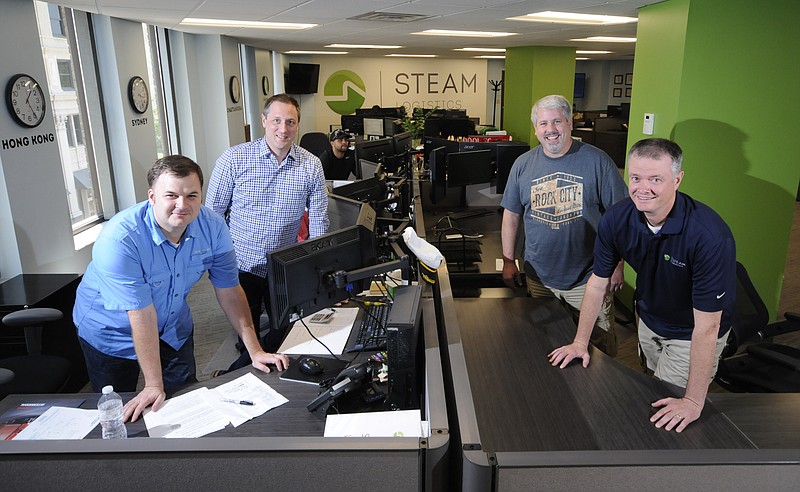In only a dozens years, Access America Transport grew from its Chattanooga start in 2002 to a $600 million-a-year logistics handling company before it merged with Coyote Logistics in 2014. The combined company sold a year later to UPS for $2 billion.
The founders of Access America are using a similar model to build an international freight forwarding company known as Steam Logistics. In its first five years, Steam Logistics has grown 20-fold - a pace faster than what Access America did in its early days.
"We have a very unabashed goal of being a billion-dollar business," says Jason Provonsha, CEO of Steam Logistics.
Provonsha, 41, who was formerly head of corporate sales at Access America, joined Steam Logistics last year and was elevated to company CEO in September. His predecessor, the 44-year-old Steve Cox, was previously head of one of Access America's biggest sales offices and continues as president and chief operating officer.
Former Access America CEO Ted Alling said he started Steam Logistics two years before the Coyote sale after clients kept asking for the logistics handlers to get into the international market.
Alling and Access America co-founders Barry Large and Allan Davis put $600,000 into starting the new company, which began with 12 employees in an office in Warehouse Row. The company has grown to 35 employees and now operates out of an entire floor in the SmartBank building at Georgia Avenue and M.L. King Boulevard.
"Our model is very similar to Access America, except that everything is international," Provonsha says. "We're not doing anything domestically or with traditional truck brokerage. Every shipment involves air or ocean shipments, usually with truck delivery on the other end of the shipment."
Some shipments are port to port and some are door to door delivery. The company has employed web-based computer links to build an electronic bridge between its operations, customers and vendors all across the globe.
In August, Steam Logistics was certified by U.S. Customs and Border Protection as a partner in its Customs-Trade Partnership Against Terrorism (C-TPAT) program to protect the supply chain, identify security gaps and implement specific security measures and best practices.
